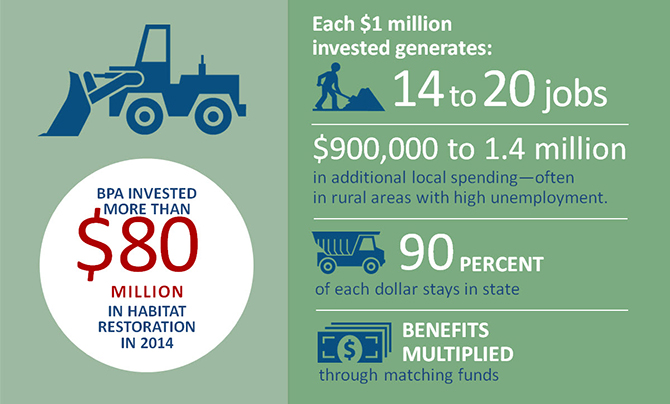
These estimates are based on a 2010 study by the University of Oregon. A study by the University of Montana had similar conclusions.
Economic Effects per $1 Million Invested in Forest and Watershed Projects
(University of Oregon, Institute for a Sustainable Environment, Ecosystem Workforce Program Briefing Paper Number 23, Spring 2010)
|
Project Types
|
Definition
|
Jobs
|
Economic Output
(multiplier effect)
|
|
In-stream
|
Enhancing stream habitat and function
|
14.7
|
$2,203,851
|
|
Riparian
|
Enhancing and restoring native riparian vegetation
|
23.1
|
$2,310,128
|
|
Wetland
|
Restoring wetland and estuarine habitat
|
17.6
|
$2,259,422
|
|
Fish Passage
|
Removing barriers to fish passage (culverts and dams), screening to protect fish from water withdrawals
|
15.2
|
$2,240,281
|
|
Upland
|
Managing agricultural water, juniper, and noxious weeds
|
15.0
|
$2,476,290
|
|
Others
|
Undertaking multiple activities in one comprehensive restoration project
|
14.7
|
$2,270,862
|
|
All (aggregate)
|
|
16.3
|
$2,311,468
|
|
Partners help increase the benefits.
The federal agencies contract with states, tribes, local watershed groups and conservation agencies, land trusts and other entities to manage the habitat restoration. In turn, those agencies contract with local businesses and suppliers to carry out the work.
Often,these partners bring their own dollars to the table. This cost-sharing further increases the economic benefits and helps the federal investment go much further.
|
|